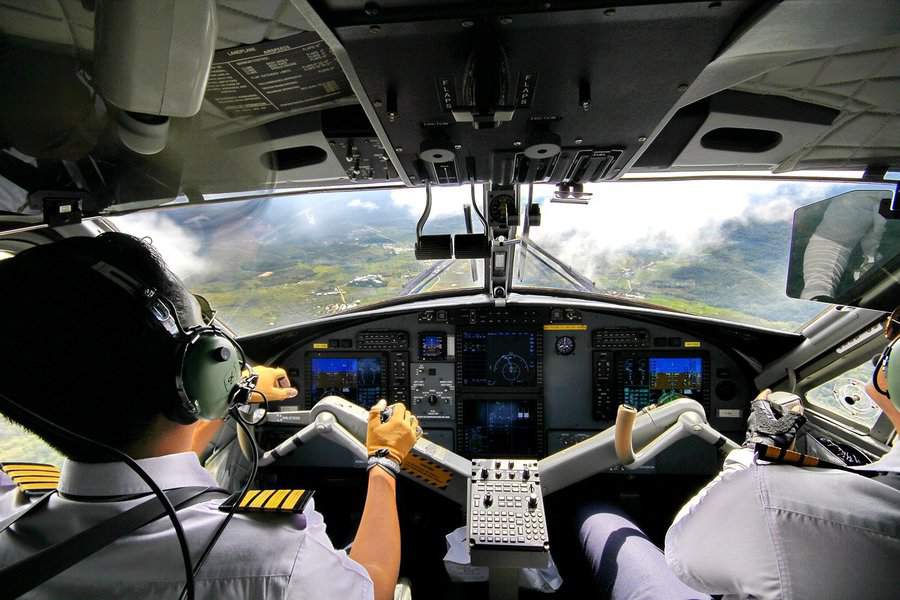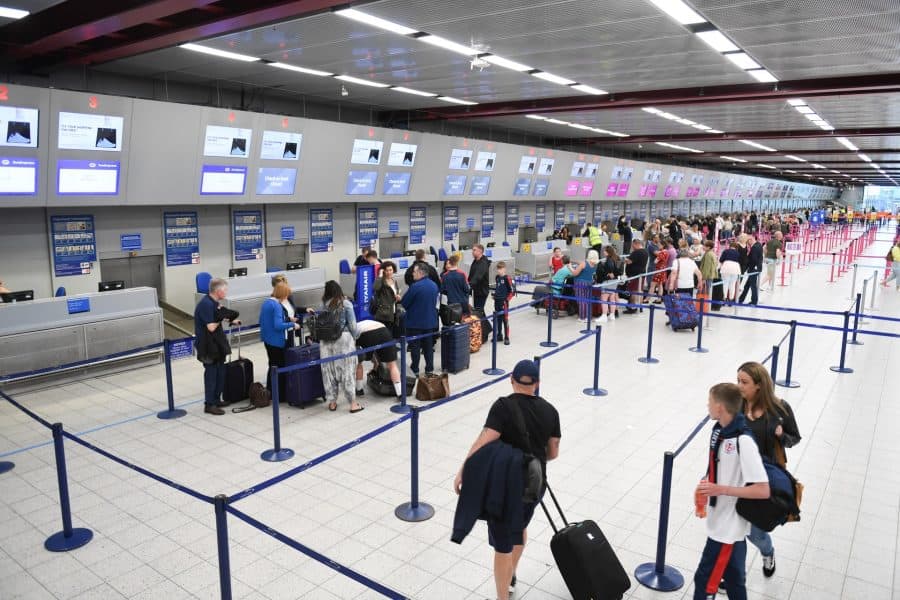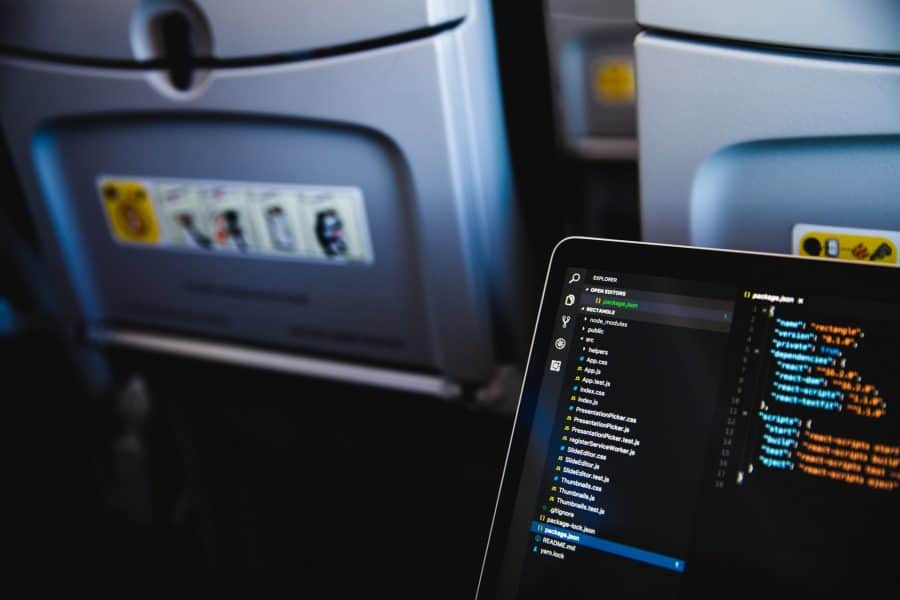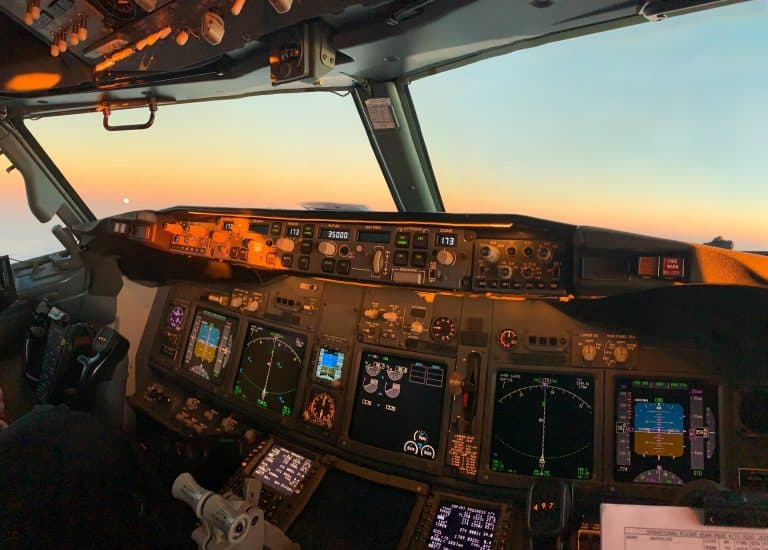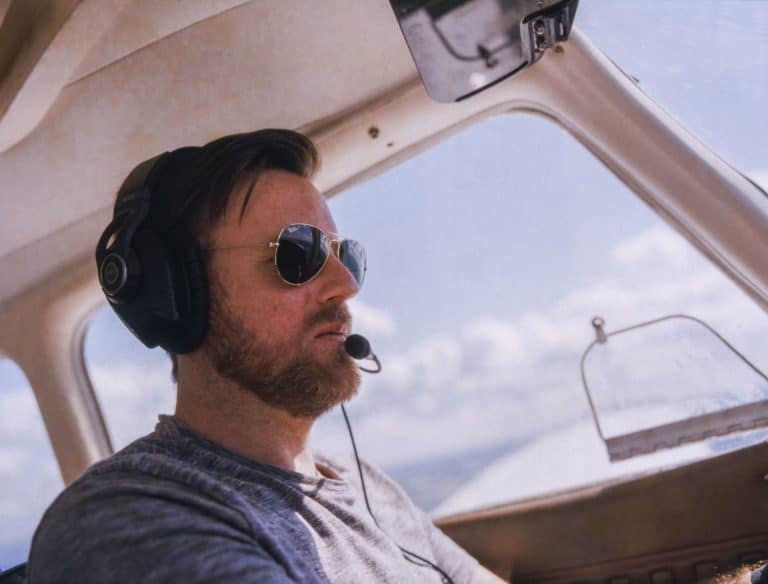Why Do Pilots Always Talk About Weather?
Everytime you fly somewhere, the pilots will give you weather updates for the route and your destination. You might wonder why they do that, as in the era of smartphones everybody knows the weather forecast and you will most likely have packed accordingly. Therefore, sunshine, rain, or temperature should be no surprise. Are they just trying to make some kind of small talk with the passengers or is there more to it?
Weather is an important factor for pilots. It will give them an idea of which runway is being used, how much extra fuel they might need or if they can land at all. Notable factors are the wind, cloud base, visibility and precipitation (that can be snow, rain, drizzle or even thunderstorms).
Where do pilots get weather information?
Before we get into details about certain aspects of weather, we need to find out where to get the information. Pilots receive an extensive briefing pack for every single flight. This is called the flight plan. It contains information about the plane, the route, changes and restrictions at airports and runways, some other information that is needed that particular day and, of course, the weather.
The weather is actually a big part of that briefing. It contains current and forecasted weather for the departure and destination airport, as well as some selected en-route airports and alternates, in case you have to divert. The current and forecasted information are called METAR and TAF and can be easily read once you understand the logic. They also are in the same format worldwide. Therefore, pilots only need to learn this one format to fly virtually anywhere.
Additionally, there are weather charts that show jetstreams, winds and turbulence for all flight levels. This is how pilots know that ?the ride might get a bit bumpy today? or if you can expect a smooth flight. However, even though these forecasts are fairly accurate, it is important to note that exact weather predictions hours in advance are usually impossible.
How to get the latest weather in flight?
Reading the flight plan is part of the pre-flight routine. Additionally, pilots need to know the current weather when starting the approach. This can be done in multiple ways. The classic method is to listen to the so-called ATIS (automatic terminal information service). This is either a computerised voice or an actual person that reads and records the weather information. Each bigger airport has its own designated frequency, where this recording is played on repeat. It is constantly updated every 30-60 minutes. They may be updated sooner, if a significant change occurs in between, for example if fog forms suddenly.

Besides the latest weather, the ATIS also contains information about the runway state (e.g., wet or dry), which runway is in use, or operational information, such as taxiway closures or bird activity.
If an airport does not have this service, then the air traffic controller will inform the pilots about the latest weather for their destination or any other airport that they may consider. This is especially useful in an emergency situation, where you need to explore multiple options for diversion.
However, there have also been new advances in technology that helps us here. The so-called ACARS (Aircraft Communications Addressing and Reporting System) can be found on board every modern airliner. This is basically a messaging service, where pilots can send and receive messages to and from the airline’s operations, maintenance, ground handling, and air traffic control. This allows pilots to access updated versions of the weather information they received in their flight plan.
Modern versions of the ACARS can also receive the actual ATIS, which contains more information as mentioned above.
What weather apps do pilots use?
There are a number of apps that all do similar things. They get the latest METAR and TAF for the airport you require. Some apps can also decode these reports and display them in an easier to read format, if you wish to do so. Others have additional features, such as grouping airports, calculating cross wind components (more on that later) or show weather charts and rain radar. These apps are publicly available and you can easily find them by searching for ?aviation weather? in your app store.
However, it should be noted that not all apps are legally acceptable as flight preparation and should be treated as such. They are a great tool to get an overview or if you just want to know what is currently going on at the airport, but if you want to go flying, you must use the official channels or weather providers.
What weather is safe – and what is not?
This is a big question and there is no one answer. What is considered ?safe? not only depends on aircraft type and equipment, but also on the runway, protections, facilities and certifications. Here are a few examples of the most common challenges.
The first one is reduced visibility due to fog or low cloud base. Modern airliners can land in almost any type of fog using their autoland capabilities. This means that planes can land with as little as 75m (250ft) visibility in Europe or 50m (150ft) visibility in the US. In this case, visibility refers to how far you can see a light through the fog, which is farther than just the concrete of the runway. However, the plane, the airline and the runway all need to be certified for this type of operation. This is not always the case, so some higher restrictions may apply.
The next big challenge can be wind. You surely have seen spectacular videos of cross wind landings. Here it greatly depends on the wind direction and how strong the cross wind component is. You can either calculate this component using the sine law, or if you are lazy (like all pilots are), use an app or the electronic flight bag to do so. There is a different limit for the maximum cross wind component for every plane. For example, in the A320 family it is 38 knots. The total wind can be much higher than this, as long as the cross wind component is within this limit. Especially if the wind is gusty, it gets very challenging and you might need more than one try to land safely.
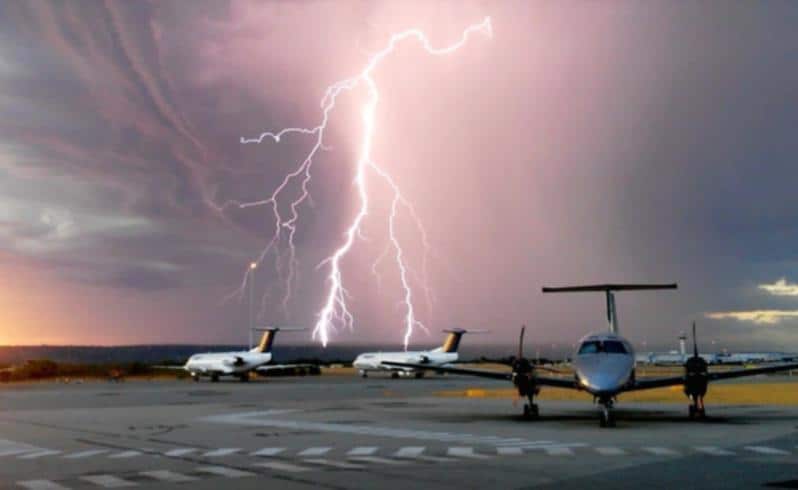
Another factor can be runway contamination. This can obviously be water, ice and snow, but also the rubber of tires on the runway. Every time a plane lands, the tires leave behind some rubber upon touchdown as you can see in pictures from runways. This residual rubber accumulates over time and can actually become quite slippery when wet. In all these cases, the pilot needs to do a specific calculation of how long the airplane requires to come to a stop for the specific conditions on that day. Of course, this distance needs to be shorter than the runway plus some safety margin.
Weather hazards in the air
While the potential weather hazards for landing are quite apparent, we need to consider that a plane is usually a lot longer in the air than on the ground. So what are the hazards while flying?
The one challenge we have all experienced is turbulence. This can be caused by a jetstream, rainshower, storms or through mountains. In some cases you simply cannot avoid them and just have to ride it out. In general, turbulence is not a risk for the airplane itself, merely a discomfort for the passengers and crew.
A far bigger threat is thunderstorms. They actually combine a few threats making them very dangerous. There are possibilities of windshears, lightning strikes and icing. All of these can severely jeopardize the functionality of an airplane. So, pilots try to avoid them at any cost. The ICAO recommends to keep a distance of at least 20NM from any thunderstorm to mitigate the threats.
Icing in particular is not limited to thunderstorms. It occurs when ice accumulates on surfaces. This, in turn, increases the weight of the aircraft, increases drag and reduces the lift produced by the wings. Ice can also clog up vital sensors. However, all the important surfaces can be heated to avoid ice buildup.
Decisions based on weather
So, how does all this knowledge influence decisions in daily operations? There are two major decisions that are based on weather. It might be necessary to delay a flight, if the weather is forecasted to be ?out of limits? at the planned time of arrival. In some cases the airline might even decide to cancel the flight altogether.
The other big decision concerns extra fuel. Planes do not simply fill up all the way every time, but just take the required amount for the flight. The pilot can then choose to take more than the legal minimum if he or she expects to have to hold before landing, need more than one try to land, or avoid weather en-route. There are certain standard figures that can be used, but it greatly depends on the experience of the crew.
In modern times, airlines try to reduce costs by taking less extra fuel. But rest assured, it is still cheaper to carry a bit of extra fuel than to divert. Thus, you can assume that your pilot will always take enough fuel for your flight.
All in all, weather has a huge impact on aviation and that is why pilots strongly focus on that. However, we cannot explore every single weather phenomena that influences a flight as it would be simply too much. But now you know why some pilots seem almost obsessed with the weather and that there are more reasons for this than you may have thought.
More from AirportNerd
The Complete Guide to Airplane Window Shade Etiquette
Picture this. You are sitting in the most undesired seat on the airplane, the middle…
Why Do Airlines and Airports Use 24-Hour Time?
The culprit of many missed flight connections: distinguishing between 12-hour and 24-hour clocks. While most…
Why Are Airports Named After U.S. presidents?
Donald Trump has been in the news for wanting to rename Palm Beach International Airport…
Why Do Laptops Get Special Attention at Airport Security?
?Shoes off, laptops out, liquids in zip lock bags, all in separate trays!? Frequent flyers…

